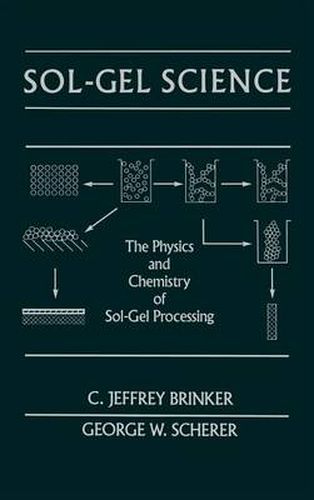Readings Newsletter
Become a Readings Member to make your shopping experience even easier.
Sign in or sign up for free!
You’re not far away from qualifying for FREE standard shipping within Australia
You’ve qualified for FREE standard shipping within Australia
The cart is loading…






Sol-Gel Science presents the physical and chemical principles of the sol-gel process at a level suitable for graduate students and practitioners in the field. This book defines sol-gel rather broadly as the preparation of ceramic materials by preparation of a sol, gelation of the sol, and removal of the solvent. The sol may be produced from inorganic or organic precursors (e.g., nitrates or alkoxides) and may consist of dense oxide particles of polymeric clusters. Brinker expands the definition of ceramics to include organically modified materials, often called ORMOSILs or CERAMERs. The emphasis of the author’ treatment is on the science, rather than the technology, of sol-gel processing. Although a chapter on applications is included, more detailed discussion is available in proceedings of conferences and in the recent collection of articles, Sol-Gel Technology for thin films, Fibers, Preforms, Electronics, and Specialty Shapes (Noyes, Park Ridge, N.J., 1988), edited by professor Lisa Klein.
$9.00 standard shipping within Australia
FREE standard shipping within Australia for orders over $100.00
Express & International shipping calculated at checkout
Sol-Gel Science presents the physical and chemical principles of the sol-gel process at a level suitable for graduate students and practitioners in the field. This book defines sol-gel rather broadly as the preparation of ceramic materials by preparation of a sol, gelation of the sol, and removal of the solvent. The sol may be produced from inorganic or organic precursors (e.g., nitrates or alkoxides) and may consist of dense oxide particles of polymeric clusters. Brinker expands the definition of ceramics to include organically modified materials, often called ORMOSILs or CERAMERs. The emphasis of the author’ treatment is on the science, rather than the technology, of sol-gel processing. Although a chapter on applications is included, more detailed discussion is available in proceedings of conferences and in the recent collection of articles, Sol-Gel Technology for thin films, Fibers, Preforms, Electronics, and Specialty Shapes (Noyes, Park Ridge, N.J., 1988), edited by professor Lisa Klein.